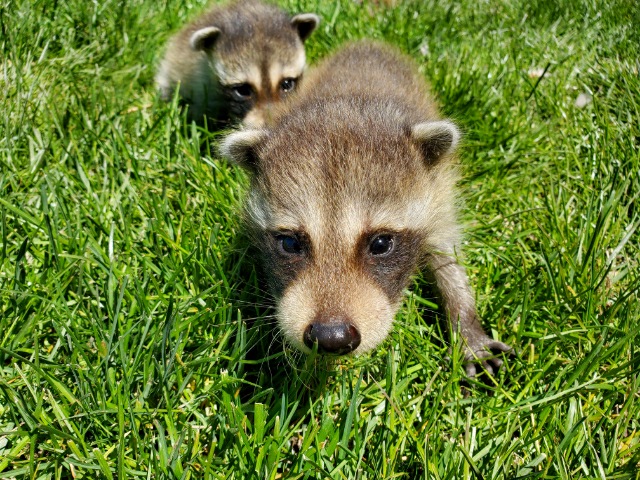Raccoons do not belong in human homes. It is not safe for people to be in close proximity to raccoons, and it is not healthy for raccoons to eat out of human garbage. Therefore, you may think that it is appropriate to take wildlife control in Newmarket into your own hands by trapping a raccoon and relocating it somewhere far away, where it can live as nature intended. While you mean well, trapping and relocating raccoons is not humane at all and likely to result in the animal’s death. Here are some reasons why trapping and relocating is inhumane to the raccoons and just not a good idea.
Trapping and Relocation Can Separate Animal Families
While solitary raccoons may make dens in human houses, more often it is a mother raccoon raising kits. Raccoons typically give birth in the spring, and then the babies have to stay with their mother for at least 12 weeks thereafter. At first, the babies are too small and helpless to leave the den, so their mother has to leave them temporarily to find food.
Trapping the mother when she leaves the den to find food and relocating her separates her from her babies. For the first few months, the babies are dependent on their mother and can’t survive without her.
The Raccoon May Not Be Adapted to Living in the Wild
You may think that nature did not intend raccoons to live in human homes and eat out of garbage cans, and you’re not entirely wrong. Nevertheless, that doesn’t necessarily mean that a raccoon that was born and has lived all its life in an urban environment can function adequately when suddenly transported to and released into a wild environment that is completely foreign and unfamiliar to it.
Raccoons are territorial animals, and in an urban setting, their territory covers an area roughly equivalent to three city blocks. Within this area, they have established multiple dens sites and located sources of food and water. Imagine how you would feel if someone captured you, took you away, and released you in a sparsely populated area where you had never been before. You would probably feel confused and disoriented and have a hard time finding food and a place to sleep. The same holds true for raccoons.
When relocated to a conservation area, raccoons typically do not survive more than a few months. If the stress of the ordeal doesn’t finish them off, they may have violent confrontations with raccoons already living in the area.
Trapping One Raccoon Doesn’t Solve Your Wildlife Problem
Trapping and relocating the raccoon may remove it from your property, but the entry point it used to get into your home is still there. Sooner or later, another raccoon, or another wild animal, is likely to find it, make a new den of it, and start raising a new family. When your solution to raccoon removal is trapping and relocation, your wildlife problems can become cyclical. You may have gotten rid of the raccoon in the short term, but in the long term, you will likely have to spend a lot of time and energy trapping and relocating animals. Not only is it inhumane; but it is also inefficient.
Why Wildlife Control in Newmarket From Skedaddle Is More Humane
Our technicians do not relocate wildlife or separate mothers from babies. We move the mother raccoon outside, but she remains within her own territory. We place the babies in a special heated box to place outside so the babies are safe until their mother finds them. We seal off entry points so that the mother raccoon cannot get back in. Raccoons typically have more than one den within their territory, so once the mother understands that the old den is no longer accessible, she can take the babies to another one. Find out more about what is involved in our raccoon removal process.



